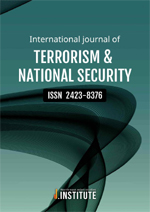
A Study on the Difference Analysis of Jeju-Type Autonomous Police’s Linked Work, Collective Efficiency, and Public Safety Satisfaction
- J-INSTITUTE
- International Journal of Terrorism & National Security
- vol.9
- 2024.08
- 44 - 59 (16 pages)
Purpose: The local police system is vital for meeting community needs and maintaining order. Despite its introduction under Moon's administration, it faces criticism and conflict, especially in Jeju. This study aims to assess perceptions among Jeju residents, police, and experts, focusing on the system's effectiveness and areas for improvement, emphasizing the need for thorough evaluation and stakeholder input before full implementation. Method: This study analyzes differences in linkage tasks, collective efficiency, and security satisfaction based on age in the Jeju local police system. Using a survey of 500 Jeju residents conducted via Macroembrain, the study employs SPSS and Amos for factor analysis, reliability testing, and regression analysis. The research aims to evaluate residents' perceptions and the impact of the local police system, examining factors such as demographic variables and system awareness. Results: Hierarchical regression analysis of the Jeju local police system reveals that demographic variables(gender, age, residence, education) have minimal impact on governance linkage, collective efficiency, and security satisfaction. In contrast, awareness of the local police system significantly influences governance linkage(β=.189), collective efficiency (β=.375), and security satisfaction (β=.220), highlighting its greater importance over demographic factors. Conclusion: Research on the implementation of local police systems has been mainly theoretical. This study, using factor and regression analyses, finds that awareness of the local police system positively impacts governance, efficiency, and security satisfaction. Effective practices and improvements, including increased public awareness and training, are suggested to enhance the system’s impact.
1. Introduction
2. Research Methodology
3. Research Results and Discussion
4. Discussion
5. Conclusion and Suggestions
6. References